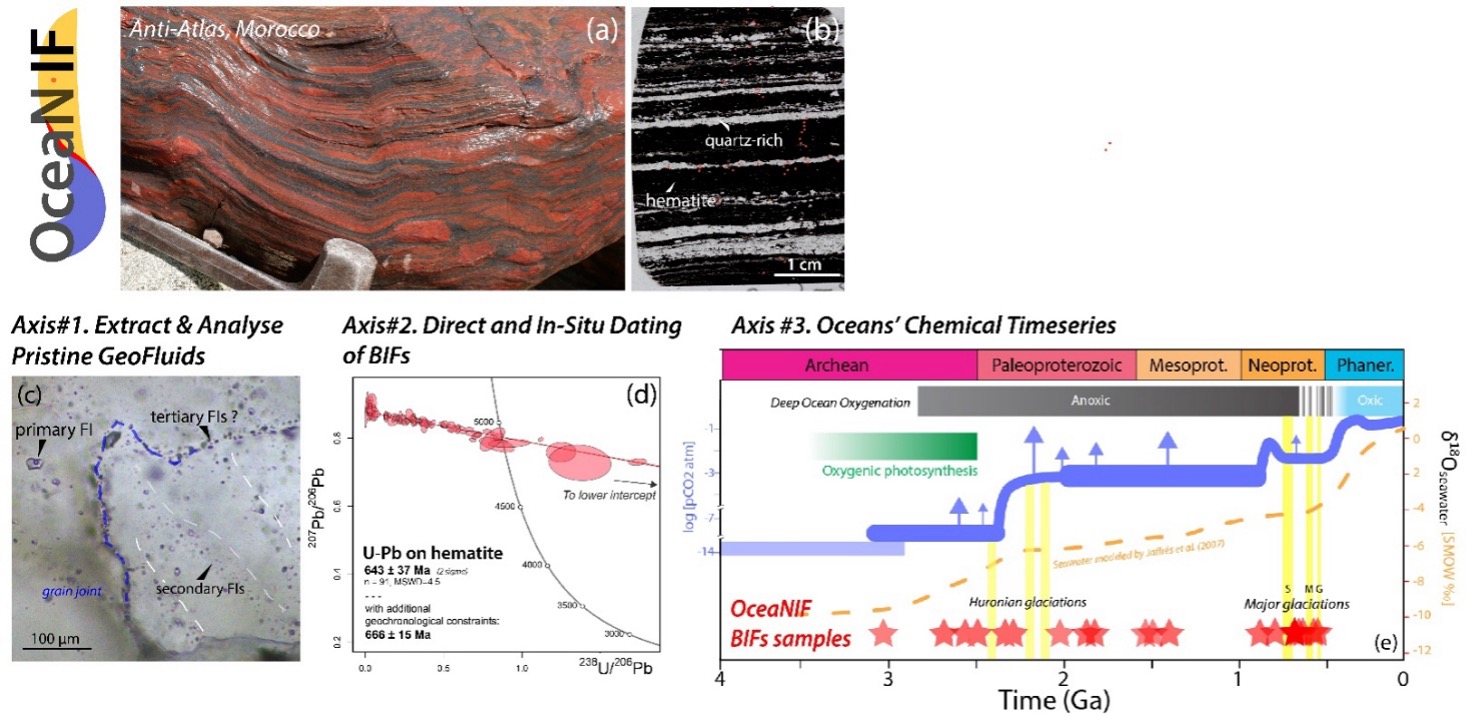ANR OCEANIF
Tracking the Evolution of OCEANs geochemistry probing Fluid Inclusions in Banded Iron Formations
Financement : ANR JCJC, k€ [ANR-25-CE01-5796]
Coordinateurs : Antoine Triantafyllou
Établissement porteur : Université Claude Bernard Lyon 1
Durée : 2026 – 2030

Résumé du projet
What was the composition of oceans during the Precambrian? Was seawater generally warmer or colder than today? How do past oceanic reservoirs record changes in biogeochemical cycles, paleoclimatic changes, and early Earth’s habitability? To address these questions, the OceaNIF project aims to investigate twenty-one world-class Banded Iron Formations (BIFs), dated from the Archean (ca. 3.8 Ga) to the Late Neoproterozoic (ca. 560 Ma). Their formation in oceanic domain, their broad temporal span and their wide paleogeographic distribution make them ideal archives for studying the geochemical evolution of Precambrian oceans and atmosphere. The primary objective of the OceaNIF project is to track the evolution of seawater’s isotopic (oxygen and hydrogen) and multi-element composition (major and trace elements) from the Archean to the Late Neoproterozoic. This project comprises three main work axes:
(i) Use fluid inclusions in Banded Iron Formations to determine the pristine geochemical signature (oxygen isotope and elemental) of ancient oceanic fluids and investigate fluid-rock interactions that occurred during and after BIF formation. We will also investigate the iron-rich layers with in-situ analysis of ‘pristine’ hematite/magnetite grains for oxygen isotope and multi-element composition after contextualizing the oxides formation
(ii) Combine fluid inclusions analysis with the development and optimization of a direct and in-situ dating method for BIFs formation, using U-Pb isotopic analysis on hematite.
(iii) Compile data from the first two axes to build a unique time-resolved dataset and shape the secular evolution of ancient ocean composition from the Archean to the Neoproterozoic. This will allow to trace its evolution in response to major paleoclimatic events (major glaciations, global oxygenation pulses).
